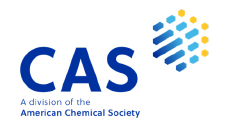Journal Volumes
Visitors
ALL : 903,055
TODAY : 496
ONLINE : 78
ALL : 903,055
TODAY : 496
ONLINE : 78
JOURNAL DETAIL
Influence of Deep Cryogenic Treatment on Microstructure, Hardness, Impact Strength and Wear of CuBeZr Alloy
Paper Type |
Contributed Paper |
Title |
Influence of Deep Cryogenic Treatment on Microstructure, Hardness, Impact Strength and Wear of CuBeZr Alloy |
Author |
Nuwan Wannaprawat and Karuna Tuchinda |
Email |
karuna.t@tggs.kmutnb.ac.th |
|
Abstract: Effects of deep cryogenic treatment (DCT) on the microstructure, mechanical and wear
properties of copper beryllium alloy (CuBeZr alloy) were studied. The samples were exposed to the DCT
at -196 degrees Celsius (°C) for different soaking time, i.e. 0.5 h, 1 h, 4 h, 8 h, 12 h, 16 h, 24 h, 48 h and
72 h. Microstructural analysis including size, shape and number of precipitates was studied by optical
microscopy (OM) and scanning electron microscopy (SEM). Results showed Ni precipitates and NiZr
precipitates with different shapes (sphere and rod-shaped) in the α matrix. After DCT, the number and
size of Ni and NiZr precipitates increased with longer soaking time, while for samples with long DCT
periods, large precipitates were observed along grain boundaries. The microstructures transformation
in Ni and NiZr precipitates were induced by internal stress developed during DCT process due to
the difference in thermal contraction/expansion of different phases. Highest compressive residual
stress was observed at the longest soaking time (72 h). Change in microstructure altered the material
properties. Hardness and wear resistance were significantly enhanced by the DCT process. Increase
in average hardness with reduction in surface sliding wear was found with increasing DCT period,
with a maximum of 17% increase in hardness and 49% decrease in wear at 72 h soaking time. After
DCT for over 24 h, impact strength measured by the Charpy impact test decreased by approximately
50%. Fractography analysis of the non-DCT and DCT-samples showed dimples, tear ridges and
precipitate cracks on fracture surfaces in all cases showing different failure modes. The fraction area
of each failure type changed with DCT period. Results suggested that major reductions in fracture
resistance were caused by precipitates locating along the grain boundaries. Thermal conductivity was
also examined using laser flash analysis (LFA) to determine whether this property degraded after the
DCT process. Thermal conductivity is a very important property for most applications using copper
beryllium alloy. Tests were performed for non-DCT and DCT samples at 24 and 72 h for temperature
range of 300°C to 600°C. Small differences in thermal conductivity were observed for all cases studied,
with maximum increase of approximately 5% compared with the non-DCT cases after 72 h DCT. |
|
Start & End Page |
631 - 647 |
Received Date |
2020-09-10 |
Revised Date |
|
Accepted Date |
2020-10-26 |
Full Text |
Download |
Keyword |
deep cryogenic treatment, copper beryllium alloy, microstructure, thermal conductivity |
Volume |
Vol.48 No.2 (March 2021) |
DOI |
|
SDGs |
|
| View:592 Download:377 | |
Copyrights © Since 2021 All Rights Reserved by Chiang Mai Journal of Science






